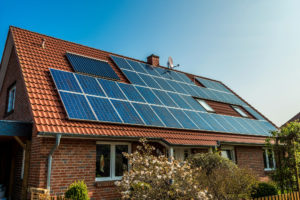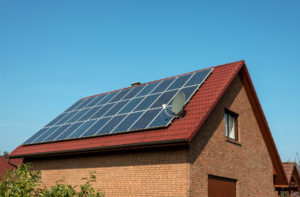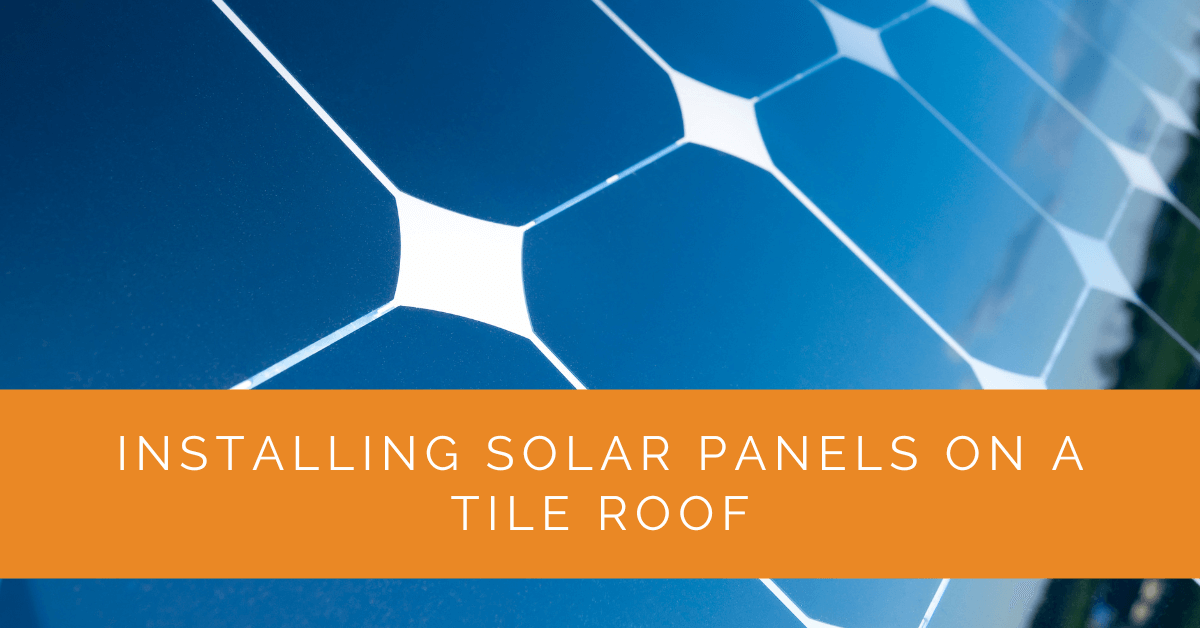With the increasing popularity of solar energy, many homeowners are considering installing solar panels to reduce their carbon footprint and save on energy costs. If you have a tile roof, it’s important to understand the unique considerations and challenges of installing solar panels on this type of roof. This article will explore the benefits, feasibility, and best practices for installing solar panels on a tile roof, whether it’s clay, concrete, or other types of tiles.
Contents
- 1 Key Takeaways
- 2 Understanding Tile Roofs
- 3 Assessing the Feasibility of Solar Panels on a Tile Roof
- 4 Preparing for Solar Panel Installation
- 5 Challenges of Installing Solar Panels on a Tile Roof
- 6 Best Practices for Installing Solar Panels on a Tile Roof
- 7 Installation Process for Solar Panels on a Tile Roof
- 8 Safety Considerations and Maintenance
- 9 Case Study: Successful Solar Panel Installation on a Tile Roof
- 10 Expert Insights From Our Solar Panel Installers About Installing Solar Panels on a Tile Roof
- 11 Experience Solar Excellence with Us!
- 12 Conclusion
- 13 FAQ
Key Takeaways
- Installing solar panels on a tile roof requires careful assessment of the roof’s condition, consideration of roof orientation and shading, and collaboration with qualified solar installers experienced in working with tile roofs.
- Challenges of installing solar panels on a tile roof include the fragility of tiles, the need for specialized equipment and expertise, and the potential for tile cutting or replacement.
- Best practices for installing solar panels on a tile roof include using tile hooks or brackets, proper tile replacement, avoiding unnecessary weight, and ensuring proper sealing and flashing to maintain the roof’s integrity.
Understanding Tile Roofs
Before delving into the installation process, it’s essential to understand the composition and structure of tile roofs. Tile roofs, especially clay and concrete tiles, are known for their durability, longevity, and aesthetic appeal. They provide excellent protection against the elements and can withstand harsh weather conditions. However, they require specific installation techniques to ensure the integrity of the roof and the solar panel system.
Assessing the Feasibility of Solar Panels on a Tile Roof
The crucial first step is assessing the feasibility of installing solar panels on your tile roof. Consider the following factors:
- Roof Condition: Evaluate your tile roof’s age, condition, and structural integrity. Ensure that it can support the additional weight of the solar panels and withstand the installation process.
- Roof Orientation and Shading: Assess the orientation of your roof and the amount of shade it receives throughout the day. Ideally, solar panels perform best when they have optimal sunlight exposure, so a south-facing roof with minimal shading is desirable.
- Available Space: Determine the space on your tile roof for installing solar panels. Consider the panels’ layout, size, and positioning to maximize energy production.
Preparing for Solar Panel Installation
Preparing for the installation of solar panels on a tile roof involves several important steps:
- Obtain Permits and Approvals: Before starting the installation process, obtain the necessary permits and approvals from your local authorities. Compliance with local regulations is essential to ensure a smooth and legal installation.
- Collaborate with a Qualified Solar Installer: Working with a qualified solar installer experienced in tile roof installations is crucial. Their expertise and knowledge of tile roofs can help ensure a successful and efficient installation.
- Assess HVAC System: It’s important to assess your HVAC (Heating, Ventilation, and Air Conditioning) system before the solar panel installation. The installation may involve roof penetrations, and ensuring the HVAC system remains unaffected and properly sealed is essential.

Challenges of Installing Solar Panels on a Tile Roof
Installing solar panels on a tile roof presents some unique challenges compared to other roofing types. These challenges include:
- Tile Fragility: Tiles can be fragile and easily cracked or broken if not handled properly during installation. Care must be taken to avoid any damage to the tiles.
- Specialized Equipment and Expertise: Installing solar panels on a tile roof requires specialized equipment, such as tile hooks or brackets, and expertise in working with tile roofs. Proper training and experience are essential to ensure the integrity of the roof and the solar panel system.
- Tile Cutting and Replacement: Tile cutting or replacement may sometimes be necessary to accommodate the solar panel installation. This process requires precision and skill to maintain the roof’s structural integrity.
Best Practices for Installing Solar Panels on a Tile Roof
To ensure a successful and long-lasting solar panel installation on a tile roof, consider the following best practices:
- Use Tile Hooks or Brackets: Instead of drilling directly into the tiles, use tile hooks or brackets designed specifically for tile roofs. These specialized mounting options provide a secure and reliable attachment point without compromising the tiles’ integrity.
- Proper Tile Replacement: If any tiles need to be removed during installation, ensure they are replaced correctly to maintain the roof’s waterproofing and structural integrity. Improper tile replacement can lead to water leaks and potential roof damage.
- Avoid Unnecessary Weight: Take precautions to avoid placing unnecessary weight on the tile roof during installation. Distribute the weight of the solar panel system evenly to prevent any stress or damage to the tiles.
- Sealing and Flashing: Properly seal all roof penetrations and flashings to maintain the roof’s waterproofing. This includes sealing around mounting brackets, conduit entries, and other points where the solar panel system connects to the roof.

Installation Process for Solar Panels on a Tile Roof
The installation process for solar panels on a tile roof typically involves the following steps:
- Roof Assessment and Layout: Assess the roof structure and the solar panel placement plan layout. Take into account shading, roof orientation, and available space.
- Mounting System Installation: Install the mounting system, including tile hooks or brackets, to securely attach the solar panels to the roof. Follow the manufacturer’s instructions and ensure proper alignment and positioning.
- Electrical Connection: Connect the solar panels to the electrical components, including inverters and electrical wiring. Adhere to electrical safety guidelines and consult with a licensed electrician if needed.
- Testing and Commissioning: Once the solar panel system is installed, conduct thorough testing to ensure its proper functioning. This includes checking the electrical connections, monitoring energy production, and verifying system performance.
Safety Considerations and Maintenance
Safety considerations and regular maintenance are crucial for your solar panel system’s long-term performance and safety on a tile roof. Here are some important points to keep in mind:
- Safety Precautions: When working on the roof, practice proper safety measures, including using fall protection equipment and following ladder safety guidelines. If you’re not experienced or comfortable working at heights, leaving the installation to professionals is best.
- Regular Maintenance: Maintain your solar panel system by inspecting it regularly for any signs of damage, such as loose connections or debris accumulation. Clean the panels as needed to ensure optimal energy production. If you notice any issues, contact a qualified solar installer for assistance.
Case Study: Successful Solar Panel Installation on a Tile Roof
Background
At Solar Panels Network USA, we pride ourselves on adapting solar solutions to various roof types. This case study highlights our successful installation of solar panels on a clay tile roof for a residential property.
Project Overview
Our client, a homeowner committed to sustainability, wanted to install solar panels to reduce energy costs and carbon footprint. The challenge was to install the solar panels on a clay tile roof without compromising its structural integrity or aesthetic appeal.
Implementation
Initial Assessment and Planning
- Roof Evaluation: We conducted a thorough inspection of the clay tile roof to assess its condition, structure, and orientation. The roof was in good shape, with minimal wear and tear, making it suitable for solar panel installation.
- Shading Analysis: We performed a shading analysis to determine the best placement for the solar panels, ensuring maximum sunlight exposure throughout the day.
System Design and Installation
Design Integration
- Custom Layout: We designed a custom layout for the solar panels, taking into account the roof’s dimensions, tile pattern, and sun exposure. The panels were positioned to optimize energy production while maintaining a balanced and aesthetic appearance.
- Mounting System Selection: We selected specialized tile hooks and brackets designed for clay tile roofs. These mounting systems ensured secure attachment without drilling directly into the tiles, minimizing the risk of damage.
Installation Process
- Tile Removal and Hook Placement: Carefully removed the tiles where the mounting hooks were to be placed. The tiles were set aside for reinstallation after the hooks were secured.
- Mounting Hook Installation: Installed the mounting hooks, ensuring they were securely fastened to the roof’s underlying structure. The hooks were designed to distribute the weight evenly, preventing stress on individual tiles.
- Tile Reinstallation: Reinstalled the removed tiles around the mounting hooks, ensuring a snug fit and maintaining the roof’s waterproofing.
- Panel Installation: Mounted the solar panels onto the installed hooks, ensuring proper alignment and secure attachment. The electrical wiring was connected to the inverter and the home’s electrical system.
Testing and Commissioning
- System Testing: Conducted thorough testing of the solar panel system to ensure all connections were secure and the system operated efficiently. Monitored the energy output to verify optimal performance.
- Final Inspection: Performed a final inspection to ensure the roof’s integrity was maintained and all tiles were securely in place. Verified that all roof penetrations were properly sealed to prevent leaks.
Results
Efficient Energy Production
The installed solar panel system exceeded the homeowner’s energy production expectations, significantly reducing their reliance on the grid and lowering electricity bills. The system’s design and placement optimized energy capture, even with the unique challenges of a tile roof.
Aesthetic and Structural Integrity
The custom layout and careful installation preserved the roof’s aesthetic appeal, blending seamlessly with the clay tiles. The use of specialized mounting equipment ensured the roof’s structural integrity was maintained, preventing damage and leaks.
Cost Savings and Environmental Impact
The homeowner enjoyed substantial savings on electricity costs, and the solar panel system’s clean energy production contributed to a reduced carbon footprint. The project’s success demonstrated that solar panels could be effectively and aesthetically installed on tile roofs.
Summary
This case study showcases our expertise in installing solar panels on tile roofs, overcoming challenges such as tile fragility and maintaining roof integrity. The project highlights the importance of thorough planning, specialized equipment, and professional installation techniques.
At Solar Panels Network USA, we are committed to providing tailored solar solutions that meet our clients’ unique needs. Our experience with various roof types, including tile roofs, ensures that we deliver efficient, reliable, and aesthetically pleasing solar installations. Join us in embracing sustainable energy and enjoy the benefits of solar power on your tile roof.
Expert Insights From Our Solar Panel Installers About Installing Solar Panels on a Tile Roof
Installing solar panels on a tile roof requires meticulous attention to detail to avoid damaging the tiles. Using specialized mounting equipment, like tile hooks or brackets, ensures a secure and damage-free installation.
Senior Solar Installer
One of the key challenges with tile roofs is ensuring proper waterproofing after installation. Ensuring all roof penetrations are well-sealed with high-quality flashing is essential to maintain the roof’s integrity and prevent leaks.
Solar Installation Technician
Working with experienced professionals who understand the nuances of tile roofs is crucial. They can accurately assess the roof’s condition and ensure the installation process preserves both the roof and the solar system’s longevity.
Lead Solar Engineer
Experience Solar Excellence with Us!
Trust in Solar Panels Network USA, where our seasoned experts deliver top-quality solar solutions for homes and businesses nationwide. With a legacy of countless successful installations and a commitment to sustainable energy, we’re your reliable partner in the solar journey. Ready for a brighter, eco-friendly future? Call us now at (855) 427-0058 and harness the power of the sun!
Conclusion
Installing solar panels on a tile roof offers numerous benefits, including reduced energy costs and environmental impact. However, it’s crucial to understand the unique considerations and challenges associated with tile roofs. By assessing feasibility, working with qualified solar installers, and following best practices, you can ensure a successful installation that maximizes energy production and preserves the integrity of your tile roof. Embrace the power of solar energy and contribute to a sustainable future with solar panels on your tile roof.
FAQ
Can solar panels be put on a tiled roof?
Yes, solar panels can be installed on a tiled roof, including clay, concrete, or other tiles. However, installing solar panels on a tiled roof requires special considerations and techniques to ensure the integrity of the roof and the solar panel system.
What roofs are not suitable for solar panels?
While solar panels can be installed on various roof types, a few may not be suitable due to structural limitations or other factors. Roofs with the following characteristics may pose challenges for solar panel installations:
- Slate or Cedar Shake Roofs: Slate and shake roofs are delicate and can be difficult to penetrate or attach solar panel mounting systems without causing damage.
- Asbestos Roofs: Asbestos roofs are hazardous materials, and disturbing them during solar panel installation can lead to health risks. Consult with professionals to evaluate the feasibility and safety of installing solar panels on asbestos roofs.
- Roofs with Extensive Shading: Roofs with significant shading from nearby structures, trees, or other obstructions may not be suitable for solar panel installations. Adequate sunlight exposure is crucial for maximizing energy production.
- Flat Roofs without Sufficient Load-Bearing Capacity: Flat roofs with insufficient load-bearing capacity may not support the weight of solar panels and mounting systems. A structural assessment is necessary to determine the suitability of the roof.
- Metal Roofs with Standing Seam: Metal roofs with standing seam profiles may require specialized mounting systems and techniques for solar panel installation. Consult with experienced solar installers to determine the feasibility of installing solar panels on these roofs.
It’s important to consult with a qualified solar installer or professional to assess the suitability of your specific roof type for solar panel installations. They can evaluate the structural integrity, shading, and other factors to determine the feasibility and recommend the best approach for your solar panel system.
About the Author
Solar Panels Network USA stands at the forefront of solar energy solutions, driven by a team of seasoned solar engineers and energy consultants. With over decades of experience in delivering high-quality solar installations and maintenance, we are committed to promoting sustainable energy through customer-centric, tailored solutions. Our articles reflect this commitment, crafted collaboratively by experts to provide accurate, up-to-date insights into solar technology, ensuring our readers are well-informed and empowered in their solar energy decisions.

